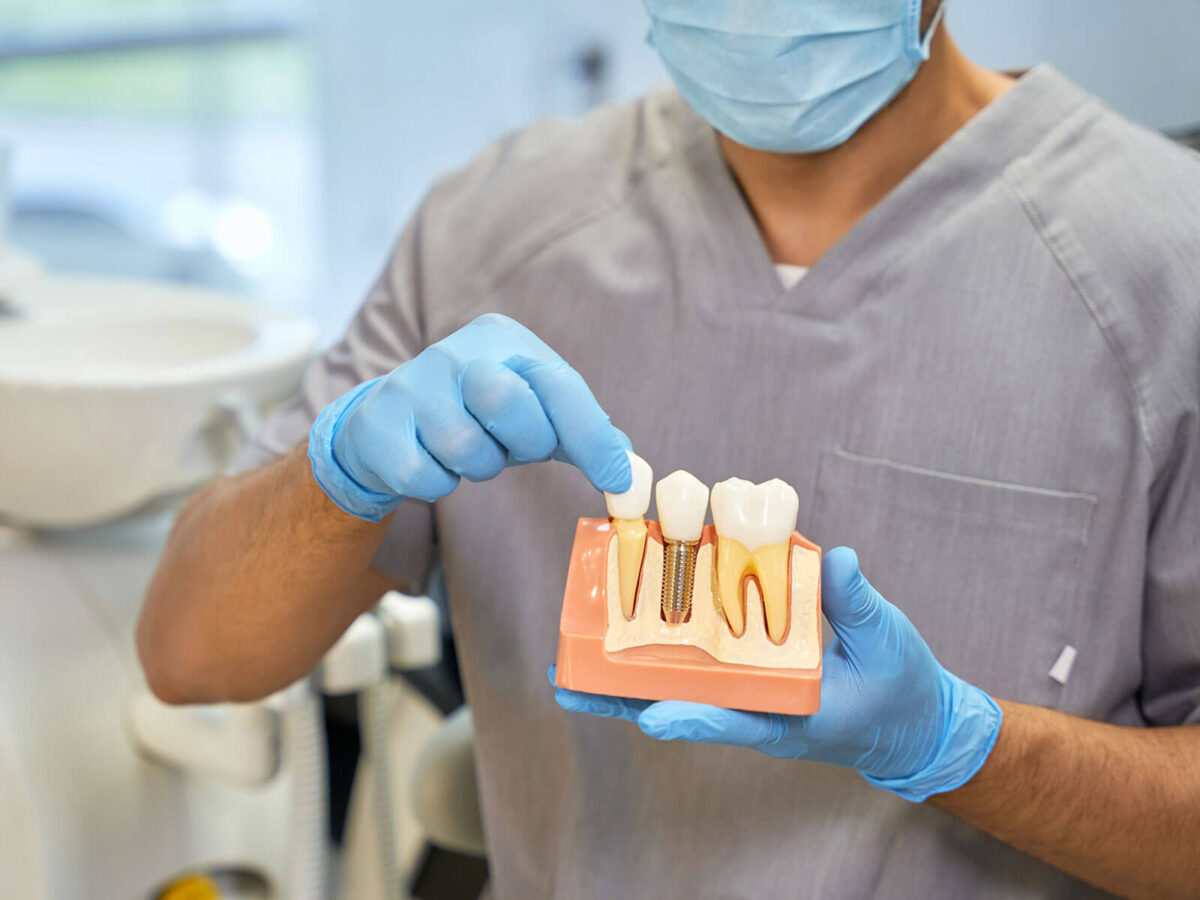Due to their durability, practicality, and natural appearance, dental implants have become a generally accepted alternative for replacing lost teeth. Individuals who have had implant surgery may be concerned if they have the sensation of a loose dental implant. This detailed guide will look at the possible causes of a flexible dental implant, the accompanying issues, and the appropriate procedures to treat the problem.
Dental Implants Explained:
Dental implants are surgically inserted artificial tooth roots supporting replacement teeth or dental prostheses. They are made of biocompatible materials, usually titanium, and are noted for their ability to fuse with the jawbone via a process known as osseointegration.
Loose Dental Implant Causes:
1. Failed Osseointegration:
Osseointegration is critical to dental implant success. If the implant does not correctly integrate with the jawbone, it may cause instability and a sensation of looseness.
2. Infection:
Peri-implantitis, a similar inflammatory condition to periodontal disease, can result in implant failure. Infection at the implant site may result in bone loss and jeopardize the implant’s stability.
3. Mechanical Issues:
Implant-related issues, such as a broken or cracked implant component, might lead to a sense of looseness. Mechanical problems can occur due to causes such as excessive force, trauma, or manufacturing flaws.
4. Inadequate Bone Support:
The long-term success of dental implants depends on appropriate bone support. Inadequate bone density or volume in the implant location can jeopardize the implant’s stability.
5. Implant Overloading:
Excessive pressure applied to the implant, particularly during the healing stage or when utilizing the restoration to chew complex meals, can overload the implant. This can affect osseointegration and lead to instability.
6. Poor Oral Hygiene:
For example, neglecting regular brushing and flossing around the implant area might contribute to inflammation, infection, and potential implant failure.
Dental care for implant patients:
1. Discomfort and Pain:
A loose dental implant can cause discomfort and pain, especially while chewing or biting. Persistent discomfort should be treated as soon as possible.
2. Infection Risk:
A loose implant can create areas where germs can grow, increasing the risk of infection. Infections near dental implants can harm the soft tissues and the underlying bone.
3. Impairment of Functionality:
A loose dental implant can impair functionality, making eating, speaking, and conducting daily activities difficult.
4. cosmetic Issues:
A loose implant may cause changes in the smile’s appearance, affecting the dental restoration’s overall cosmetic outcome.
Procedures to Follow If Your Dental Implant Feels Loose:
1. Make an appointment with your dentist.
Call your dentist or oral surgeon immediately if you suspect you have a loose dental implant. Immediate evaluation is required to establish the reason and select the best action.
2. Avoid Putting Pressure on the Implant:
Avoid putting undue pressure on the loose dental implant until you see your dentist. Avoid chewing on that side of the mouth, and be mindful of your eating habits.
3. Maintain dental Hygiene:
Maintain adequate dental hygiene while being gentle around the location of the loose implant. Brush and floss with care to prevent putting additional strain on the implant.
4. Over-the-counter analgesics:
If you are in pain, you can use over-the-counter pain relievers as your dentist prescribes. However, do not rely on pain medication as a long-term solution; instead, address the underlying source of the problem.
5. Diagnostic Tests:
Your dentist may use X-rays or imaging to check the condition of the implant, surrounding bone, and any potential concerns. This aids in determining the root reason for the implant’s instability.
6. Implant Removal and Replacement Options:
Removal and replacement may be considered if the implant cannot be stabilized. This decision will be made in cooperation with your dentist, and a new implant can be inserted once the area has healed if necessary.
7. Follow-Up Care:
Follow your dentist’s postoperative care and maintenance guidelines after any necessary treatments. Keep all scheduled follow-up appointments to track the healing process.
Conclusion:
A loose dental implant is a serious problem that must be addressed immediately. Communication with your dentist on time, strict oral hygiene practices, and adherence to indicated treatment choices are critical stages in addressing the issue and ensuring the long-term success of your dental implant. Many concerns connected with a loose implant can be easily treated with the proper care and intervention, allowing you to regain comfort, functionality, and confidence in your smile.


